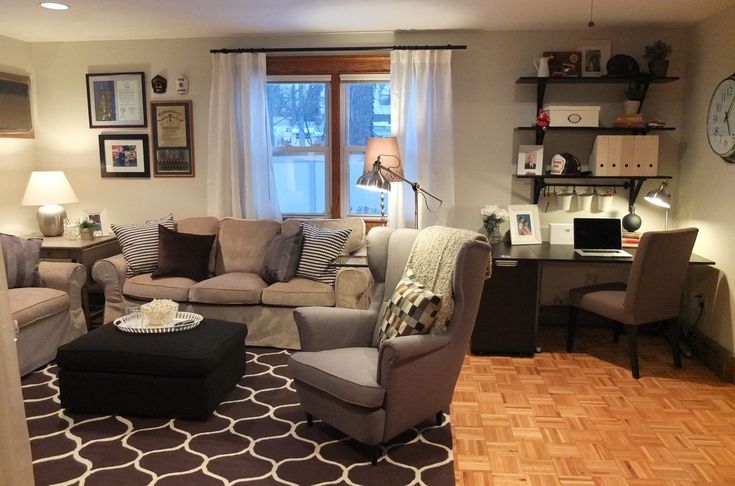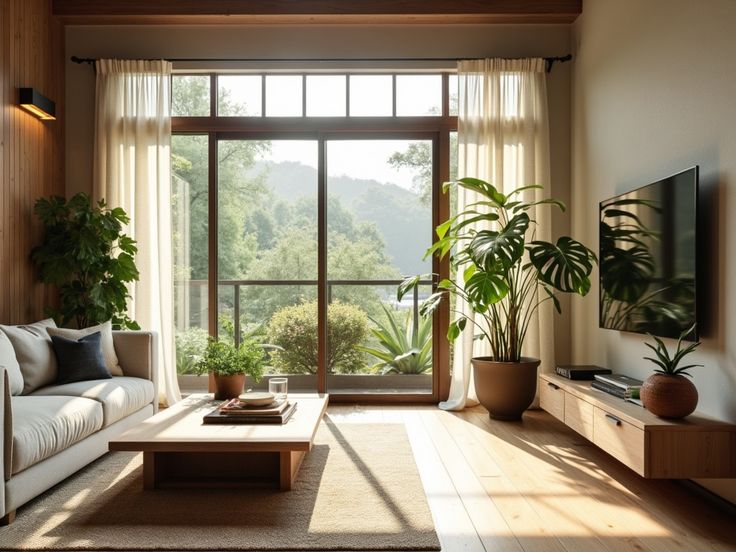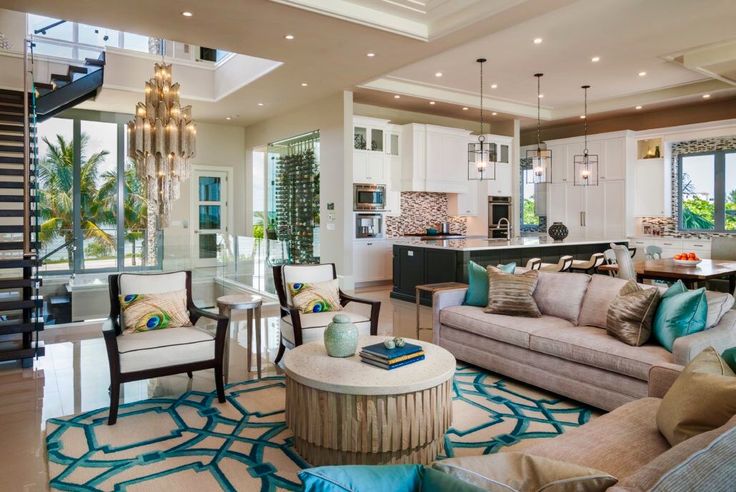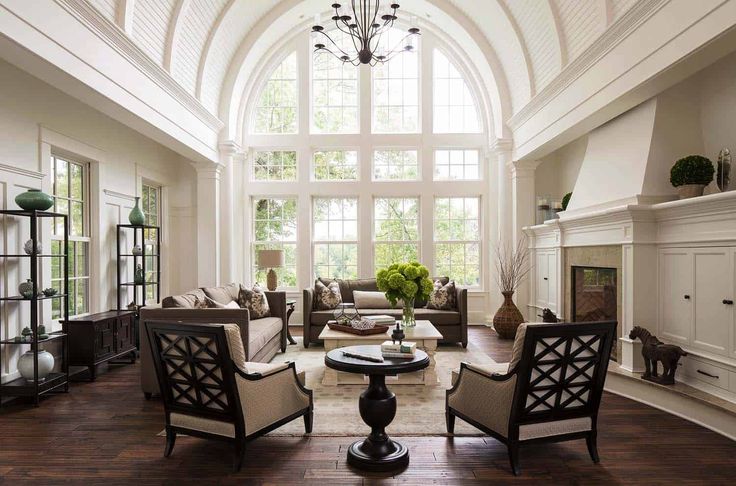Design Tricks to Make Any Living Room Feel Bigger with Smart Furniture Placement
Design Tricks to Make Any Living Room Feel Bigger with Smart Furniture Placement – A spacious living room is a dream for many, but not every home comes with ample square footage. Fortunately, you don’t need to knock down walls or renovate to make your living room feel more expansive. With strategic furniture placement and clever design tricks, even the smallest spaces can feel open and inviting. Here’s how to maximize the potential of your living room using smart furniture placement and design techniques.
1. Understand Your Space
Before diving into furniture placement, it’s essential to understand the dimensions and layout of your living room. Measure the length, width, and height of the room, noting any architectural features like windows, doors, and built-in elements. This information will help you choose appropriately sized furniture and determine the best arrangement for the space.
Key Tips:
- Use a floor plan app or draw a scaled diagram to visualize the layout.
- Identify the focal points in the room, such as a fireplace, television, or large window.
2. Choose the Right Furniture
Oversized furniture can overwhelm a small living room, making it feel cramped. Opt for pieces that are proportionate to your space and prioritize multi-functional designs.
Smart Furniture Choices:
- Compact Sofas and Sectionals: Look for sleek, low-profile sofas with clean lines. L-shaped sectionals can maximize seating without taking up too much space.
- Multipurpose Furniture: Coffee tables with storage, ottomans that double as seating, and convertible sofa beds are excellent space-savers.
- Open-Frame Pieces: Furniture with open legs and minimal bulk, like a mid-century modern armchair, creates an airy feel.
3. Embrace Minimalism
Clutter can make a room feel smaller, so aim for a minimalist approach when decorating. This doesn’t mean your living room needs to be devoid of personality; rather, be intentional about what you include.
Minimalist Tips:
- Stick to a neutral color palette to create a cohesive and serene atmosphere.
- Limit decorative items to a few key pieces, such as a statement artwork or a unique vase.
- Use hidden storage solutions to keep clutter out of sight.
4. Maximize Natural Light
Natural light can make a room feel larger and more inviting. If your living room doesn’t have ample natural light, use tricks to amplify what’s available.
Light-Enhancing Strategies:
- Use sheer curtains or blinds to allow maximum sunlight while maintaining privacy.
- Place mirrors strategically to reflect light and create the illusion of more space.
- Opt for light-colored walls and ceilings to bounce light around the room.
5. Float Your Furniture
While it’s tempting to push furniture against the walls to free up space, this can make your room feel cramped and boxy. Instead, consider “floating” your furniture by positioning it away from the walls.
Benefits of Floating Furniture:
- Creates pathways and improves traffic flow.
- Defines distinct zones within the living room.
- Encourages a more dynamic and inviting layout.
6. Define Zones
In a small living room, defining zones can create a sense of order and purpose. This is particularly important in open-plan spaces.
Zoning Ideas:
- Use area rugs to delineate seating areas.
- Arrange furniture in clusters to create intimate conversation zones.
- Incorporate shelving or screens to subtly separate different functions.
7. Opt for Vertical Solutions
When floor space is limited, think vertically. Utilizing the walls can free up valuable square footage while adding visual interest.
Vertical Space Tips:
- Install wall-mounted shelves or floating cabinets to store books and decor.
- Hang curtains high above the window frame to make the ceilings appear taller.
- Use tall, slim bookcases to draw the eye upward.
8. Play with Scale and Proportion
Mixing different sizes and shapes of furniture can add depth and prevent the room from feeling monotonous. However, balance is key.
Scaling Tips:
- Pair a large sofa with smaller side tables or a petite armchair.
- Avoid overcrowding the room by maintaining negative space.
- Choose a few oversized accents, like a floor lamp or a large artwork, to make a statement.
9. Create an Optical Illusion with Rugs
A well-chosen rug can make your living room feel larger and more cohesive. The key is to choose the right size and placement.
Rug Placement Tips:
- Select a rug large enough to fit all the main furniture pieces. At a minimum, the front legs of sofas and chairs should rest on the rug.
- Opt for light or neutral tones to create an open feel.
- Use striped rugs to elongate the room visually.
10. Incorporate Reflective Surfaces
Reflective materials like glass, mirrors, and metallic finishes can create the illusion of more space by bouncing light and adding a sense of depth.
Reflective Ideas:
- Use a large mirror as a focal point, placing it opposite a window to reflect natural light.
- Choose glass or acrylic coffee tables to maintain a sense of openness.
- Incorporate metallic accents, like gold or silver decor pieces, to add sparkle and dimension.
11. Layer Lighting
Lighting can transform the mood of your living room and make it feel more spacious. Layered lighting adds depth and ensures every corner of the room is well-lit.
Lighting Layers:
- Ambient Lighting: Use ceiling fixtures or recessed lights for overall illumination.
- Task Lighting: Place table lamps or floor lamps near seating areas for focused light.
- Accent Lighting: Highlight artwork, architectural features, or shelves with LED strips or spotlights.
12. Declutter and Organize
A clutter-free living room feels larger and more relaxing. Regularly edit your belongings and find storage solutions that work for your lifestyle.
Decluttering Tips:
- Use baskets or bins to corral loose items like magazines or toys.
- Opt for furniture with built-in storage, like a storage ottoman or a bench.
- Implement a daily tidy-up routine to keep the space organized.
13. Use Color Strategically
Color can influence how we perceive space. Lighter tones tend to open up a room, while darker colors can make it feel cozier.
Color Tips:
- Stick to a monochromatic color scheme for a seamless look.
- Use pops of color sparingly to add interest without overwhelming the space.
- Paint an accent wall to create depth and draw attention to a specific area.
14. Keep Pathways Clear
Obstructed pathways can make a small living room feel cramped. Arrange furniture to allow for easy movement around the space.
Pathway Tips:
- Leave at least 18 inches of space between coffee tables and sofas.
- Avoid placing furniture in doorways or high-traffic areas.
- Use narrow or streamlined furniture in tight spaces.
15. Experiment and Adapt
Designing a living room is a dynamic process, and it’s okay to experiment with different layouts and arrangements. Don’t be afraid to rearrange furniture until you find the perfect setup.
Final Thoughts:
- Take photos of your living room from different angles to see what works best.
- Ask for feedback from friends or family members who visit your home.
- Trust your instincts and prioritize comfort and functionality.
By incorporating these design tricks and smart furniture placement strategies, you can transform your living room into a space that feels bigger, brighter, and more welcoming. Whether you’re working with a compact apartment or a cozy house, these tips will help you make the most of your living space.






